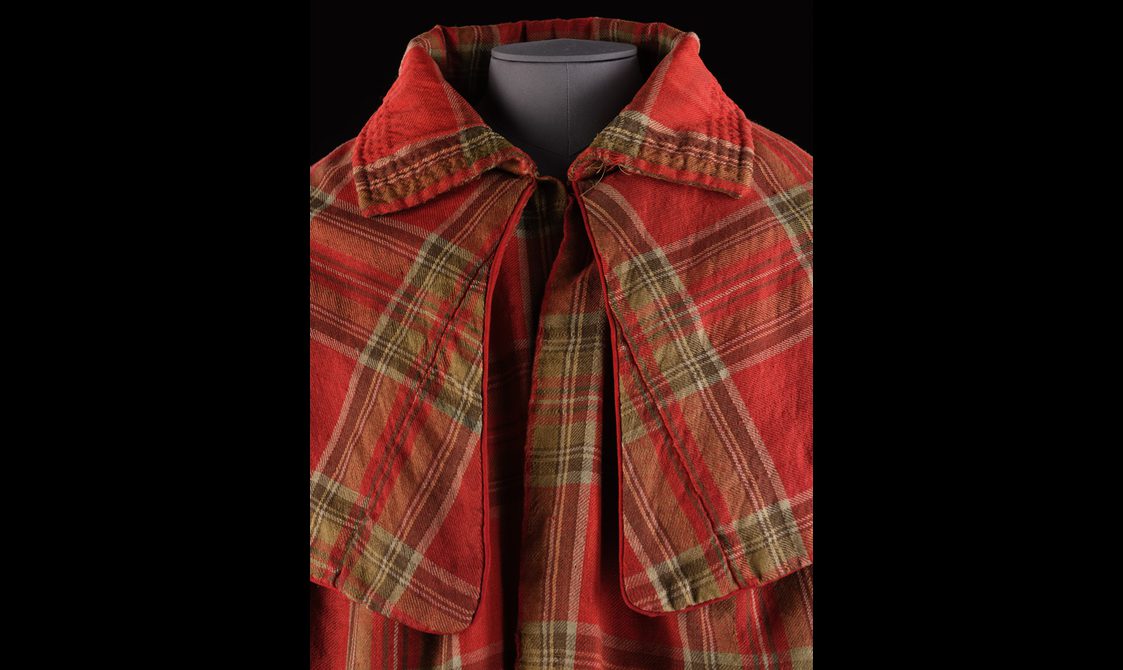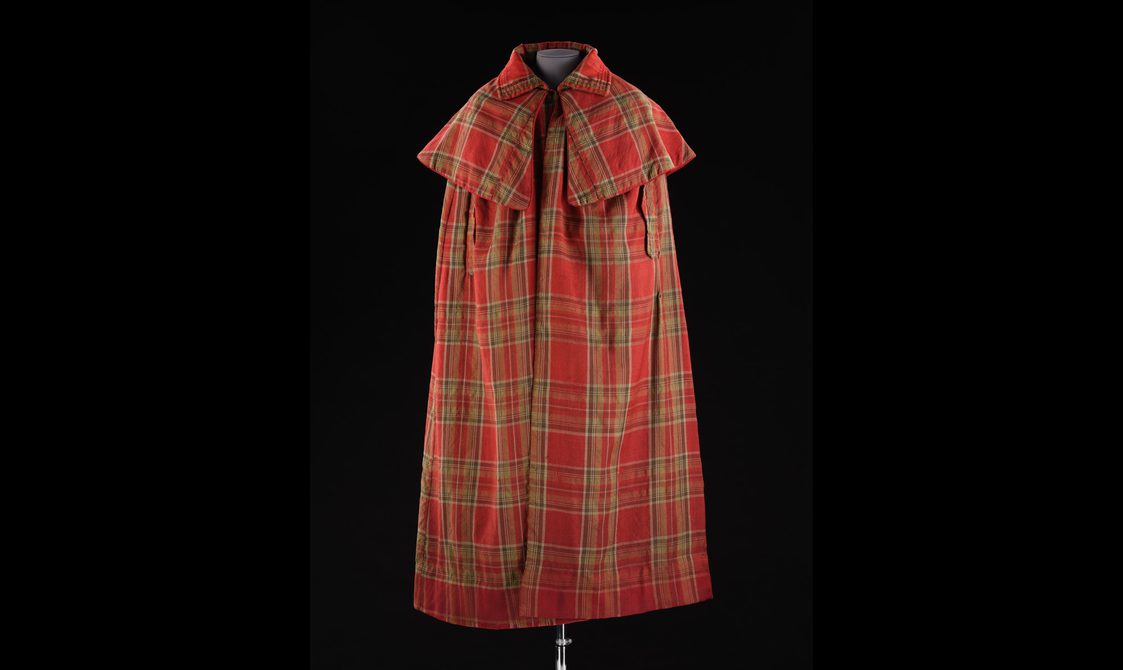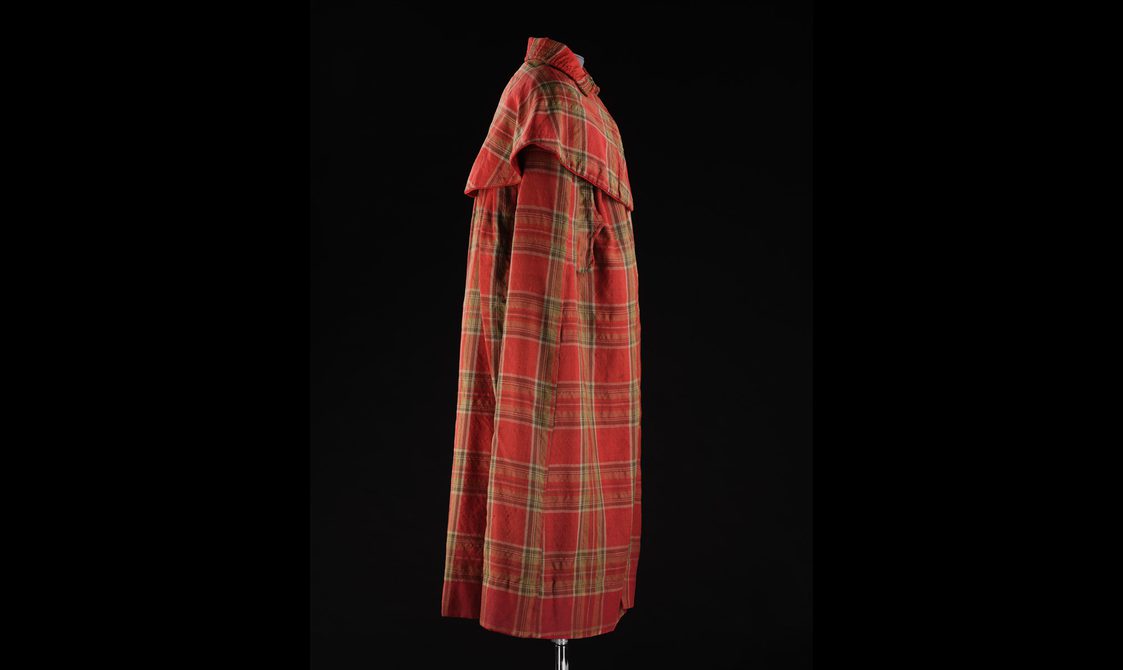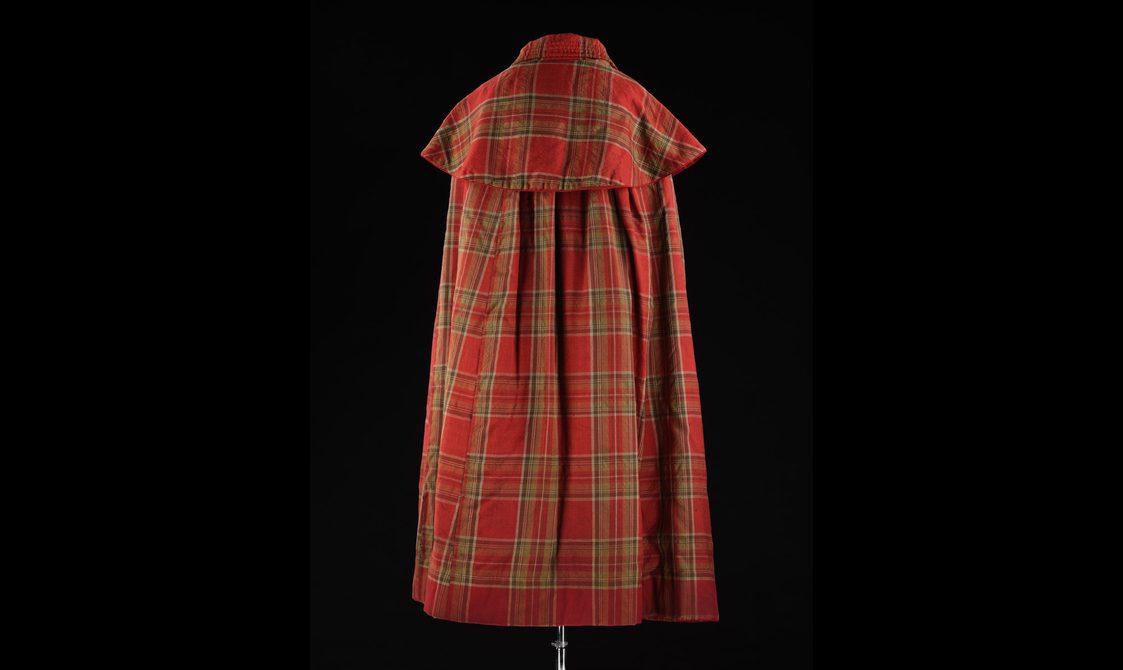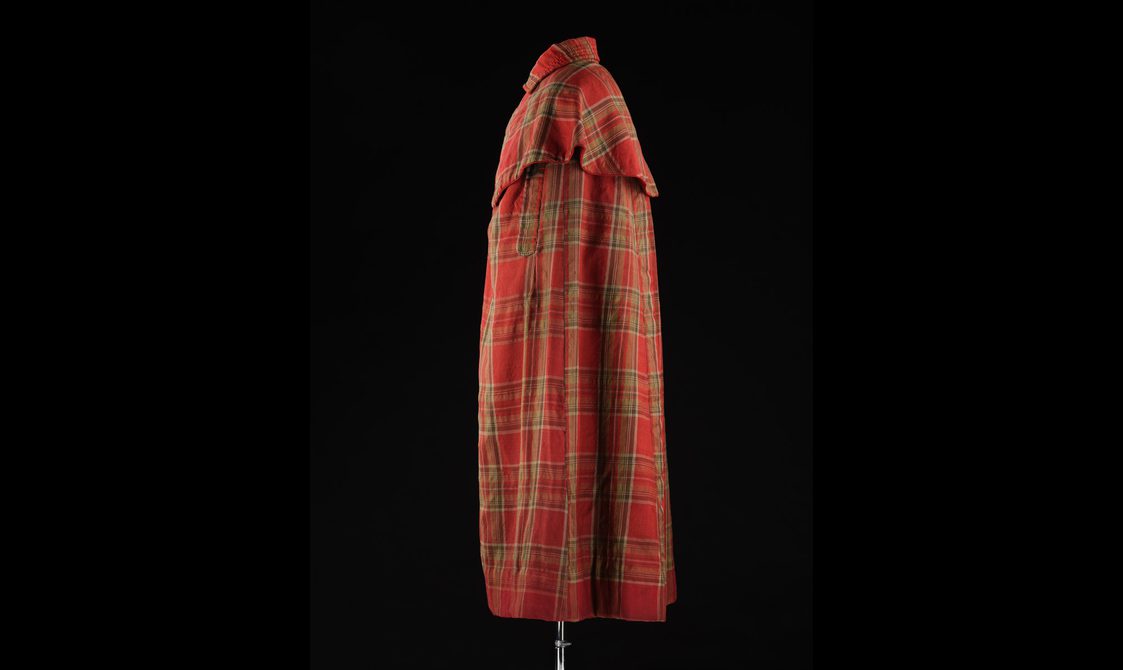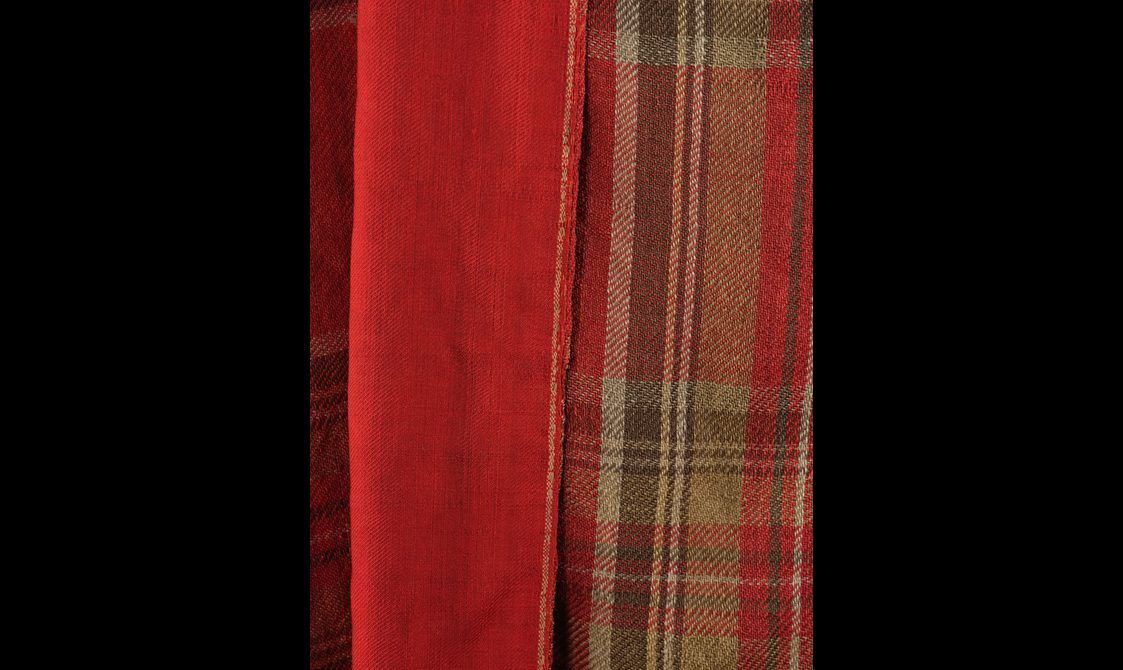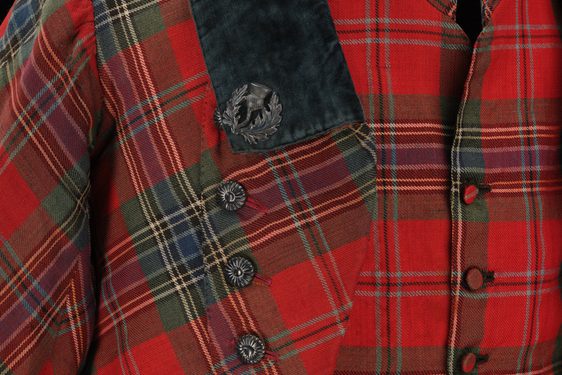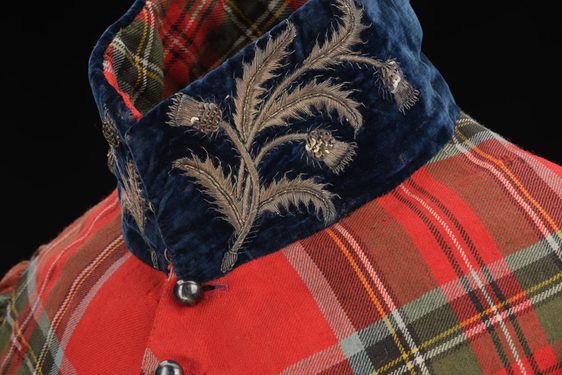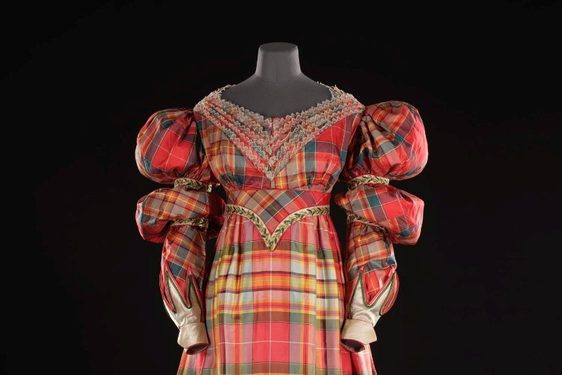
Tartan cloaks from the Georgian period
News Story
Beyond the realms of Highland dress tailoring, Scottish tartan emerged as a popular fashion fabric in Georgian Britain. The cloth found its way into a variety of everyday and occasional garments, such as women’s cloaks, gowns and children’s clothing. Discover two tartan cloaks in our collection.
Tartan cloak, c.1800-1810 (M.1930.272)
During the early 1800s, tartan was in vogue as cloaking fabric. The cloth was a popular option for outdoor wear, as the tight twill structure of the weave and natural water-repellent qualities of the wool provided excellent protection from the elements. This particular cloak has a thick shoulder cape and a high turned-down collar, offering the wearer an increased level of comfort.
Image gallery
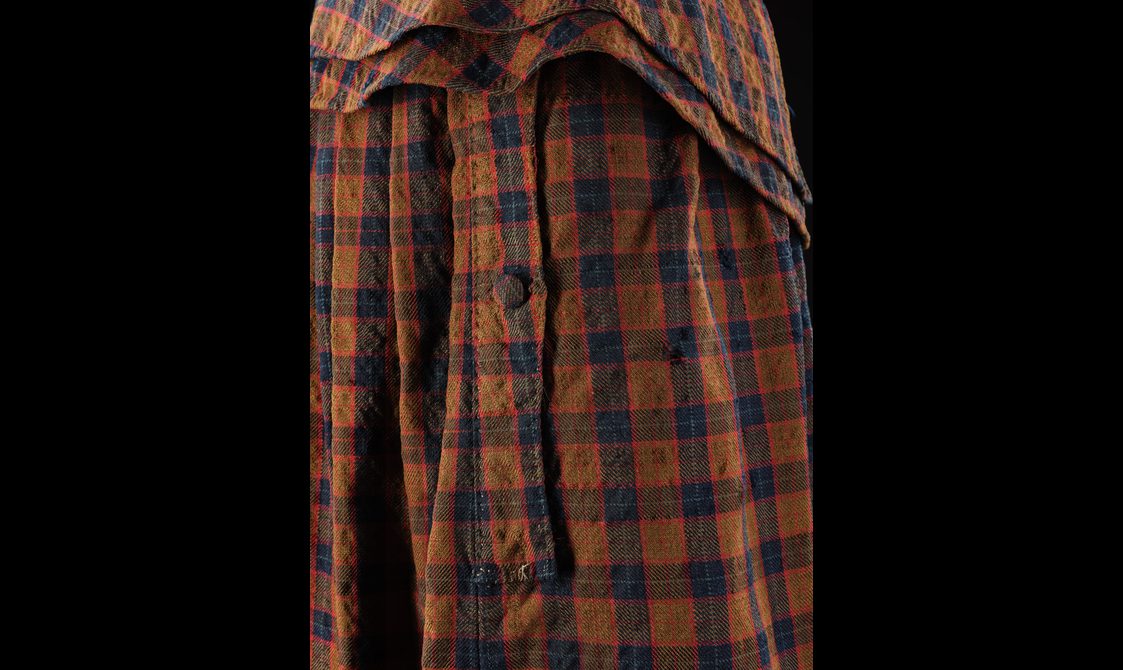
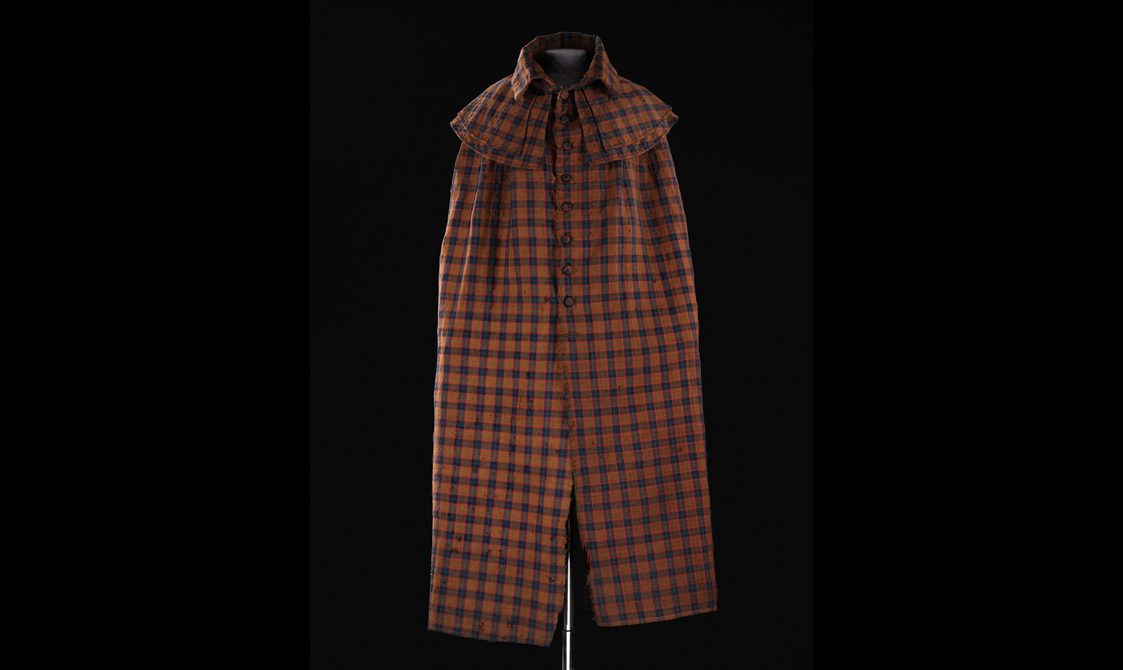
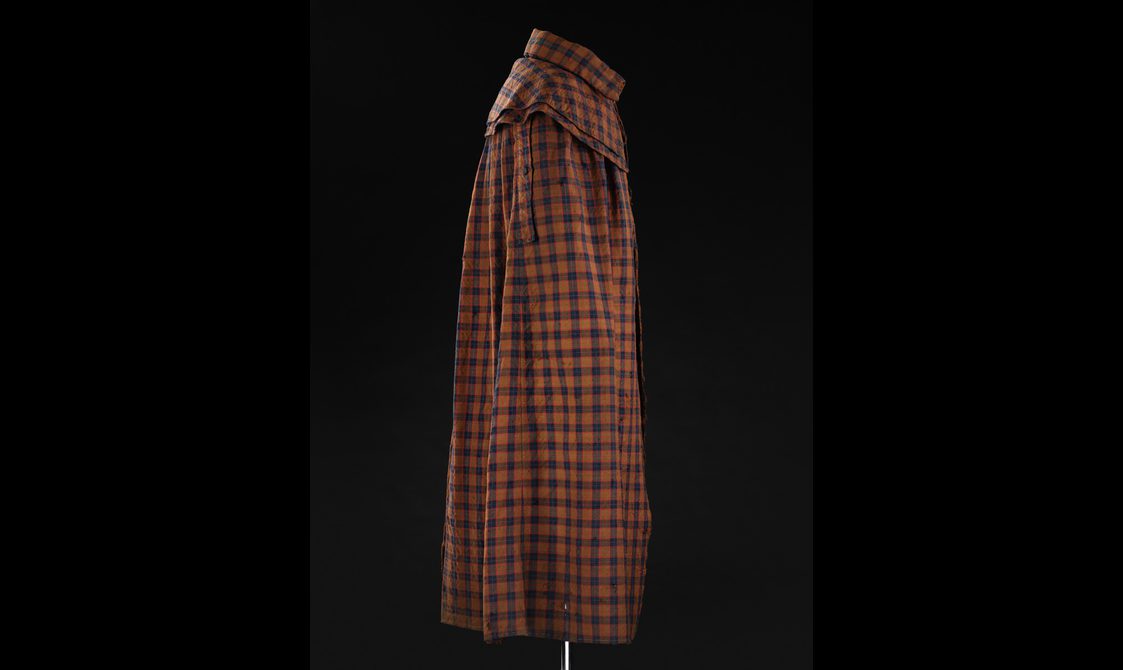
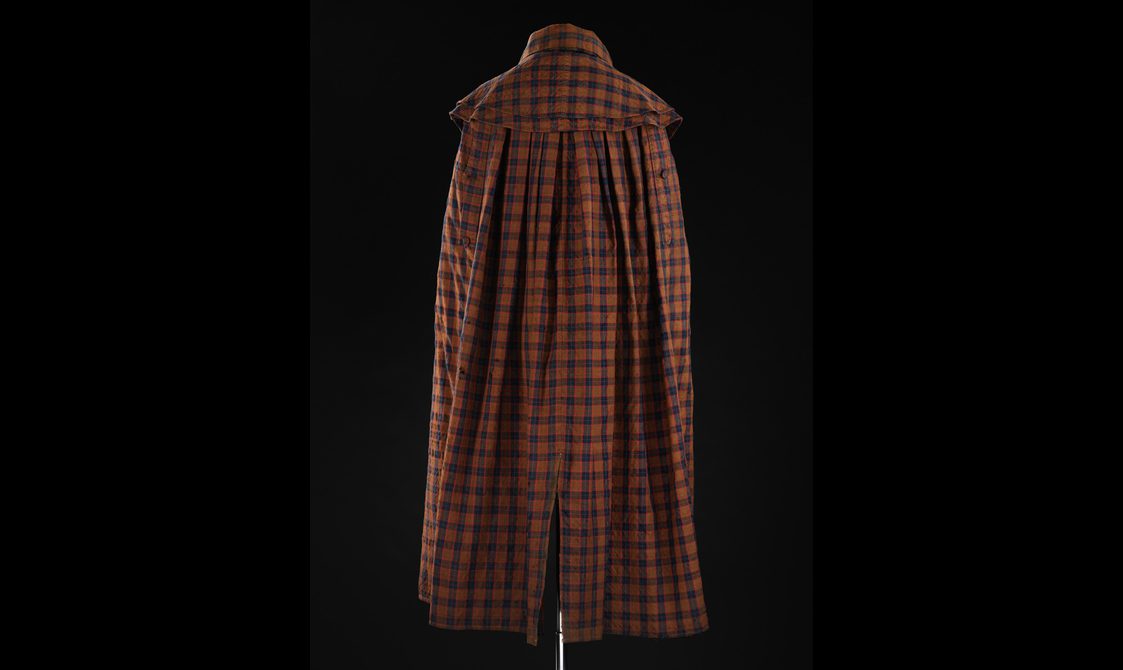
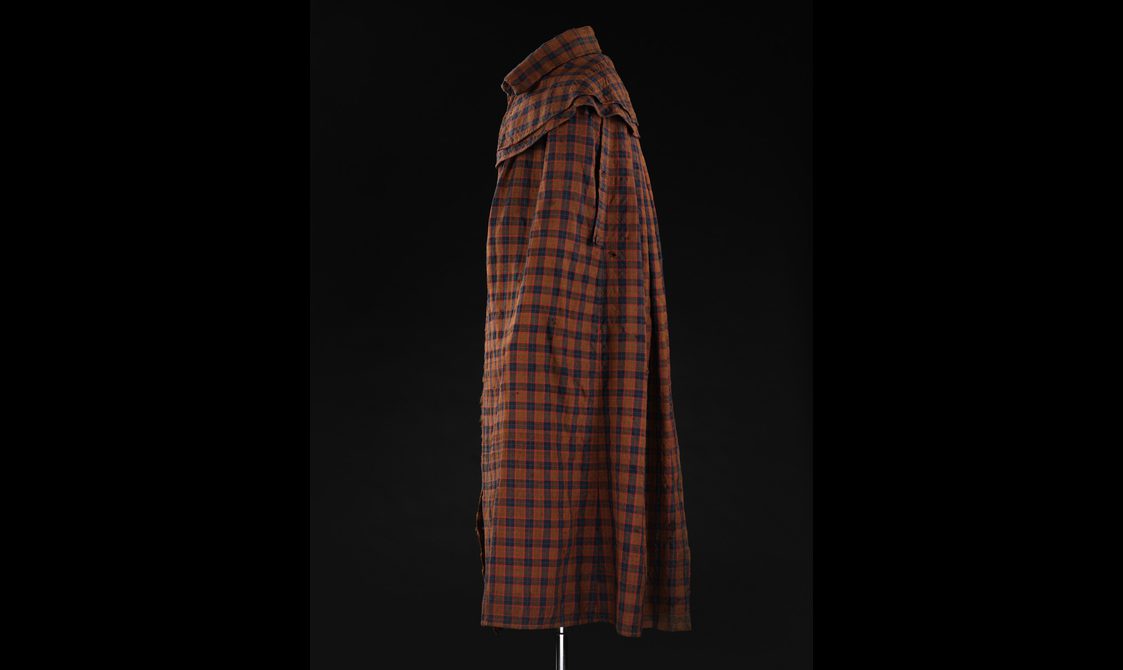
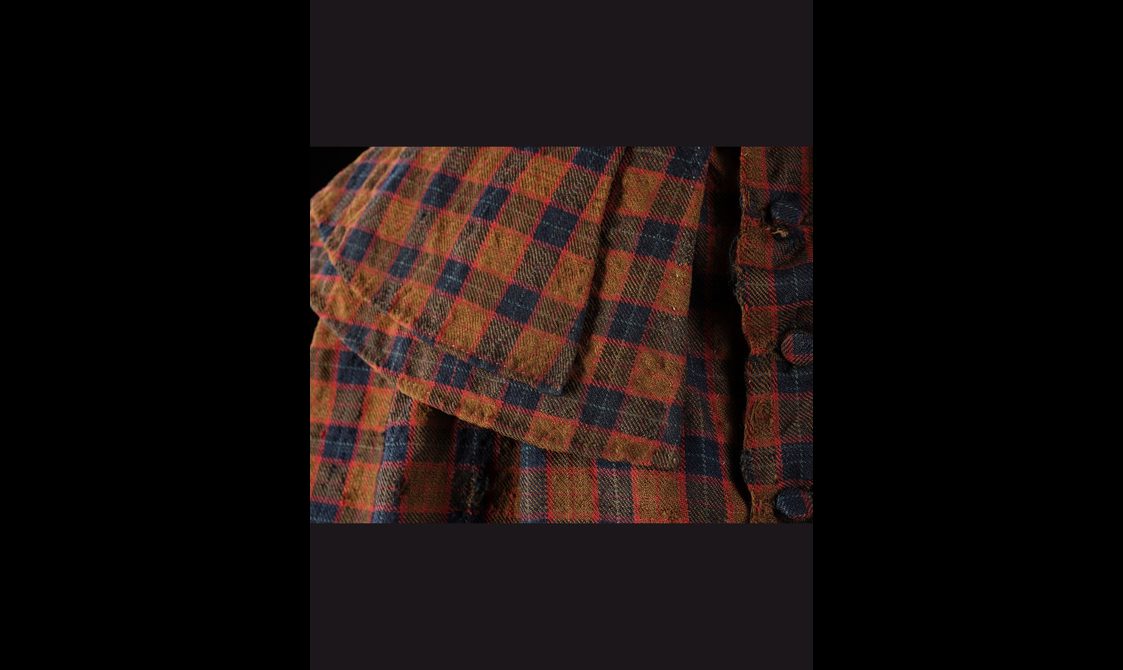
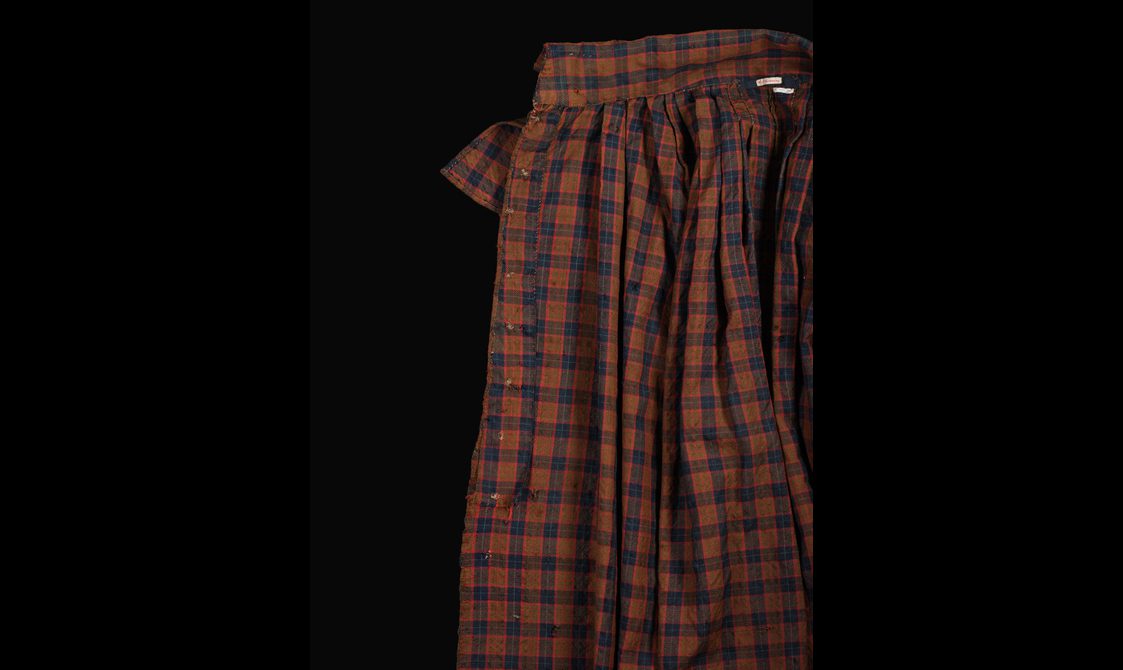
Royal Stewart tartan cloak, c.1830 (A.1993.209)
Due to its high-profile adoption by Scottish regiments and members of the British royal family since the early decades of the 19th century, the Royal Stewart pattern has become one of the most popular and widely recognised tartans in the world.
It was a common fashion fabric in the Georgian and Victorian periods and is often seen in surviving cloaks of the era. Such cloaks often betray their practical function, the bright fabrics soiled by mud and accumulated damp. The fact that the hem is badly stained and has been turned up at a later date indicates that this cloak had a long and useful life, well past the point of stylishness.
Image gallery
